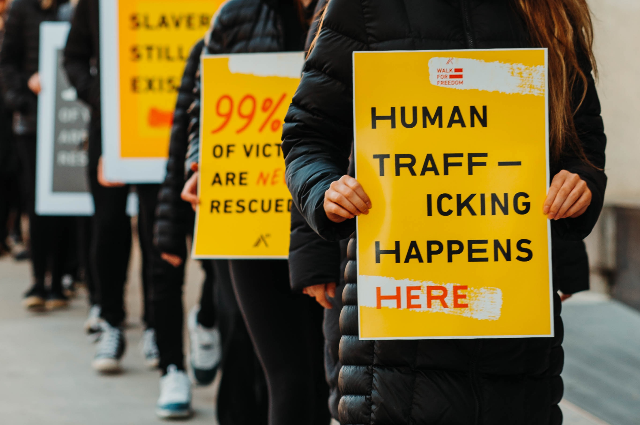
"Human trafficking is a crime against humanity. We must unite our efforts to free victims and stop this crime that’s become a global plague." - Pope Francis
Human trafficking is the illegal trade and exploitation of people for the purpose of forced labor, sexual exploitation, or other forms of servitude. This involves recruiting, transporting, harboring, or receiving individuals through force, fraud, or coercion for the purpose of exploitation. It is a grave violation of human rights and a global problem that affects millions of people each year.
Human trafficking is one of the most pressing issues of our time. It is a modern-day form of slavery that affects millions of people around the world. In India, it is a major problem, with thousands of people trafficked every year.
THE SCOPE AND PREVALENCE OF HUMAN TRAFFICKING IN INDIA:
Human trafficking is a major problem in India, with thousands of people trafficked each year. Due to its large population and geographic location, India is both a source and destination country for human trafficking.
According to the Global Slavery Index 2018, there are an estimated 8 million people living in modern slavery in India, which includes forced labor, forced marriage, and sex trafficking. Women and children are particularly vulnerable to trafficking, with many forced into prostitution, domestic servitude, and other forms of exploitation.
India is also a transit country for trafficking, with victims from neighboring countries such as Nepal and Bangladesh being trafficked through India to other destinations. The country's porous borders and weak law enforcement make it difficult to monitor and prevent trafficking.
Despite the government's efforts to combat trafficking, including passing new laws and establishing anti-trafficking units, the problem remains widespread. Many victims are not identified or rescued, and traffickers often operate with impunity.
In conclusion, human trafficking is a serious issue in India that requires concerted efforts from the government, civil society, and the international community to address. It is important to increase awareness about the problem, strengthen law enforcement, and provide support to victims. Only by working together can we hope to end this heinous crime and protect the rights and dignity of all people.
IMPORTANCE OF THE ISSUE:
One of the key reasons why human trafficking issue is so important is its impact on human rights. Traffickers use force, coercion, or deception to exploit victims for various forms of labor, including forced labor, domestic servitude, and sexual exploitation. These victims suffer immense physical and psychological harm, and their human rights are gravely violated.
Human trafficking also has significant economic consequences. It fuels the black market and perpetuates poverty, as many victims are forced into low-wage, exploitative labor. Additionally, the cost of preventing and combating human trafficking can be high, with significant resources required to investigate and prosecute traffickers, rescue and rehabilitate victims, and prevent future instances of trafficking.
Furthermore, human trafficking is a major threat to national security, as it often involves organized crime, corruption, and the exploitation of vulnerable populations. It can also lead to the spread of infectious diseases, social instability, and the erosion of trust in government institutions.
Overall, human trafficking is a critical issue that requires a coordinated response from multiple stakeholders. This response should include measures to protect and empower vulnerable populations, strengthen law enforcement efforts to investigate and prosecute traffickers, and increase public awareness about the dangers of human trafficking. Only by working together can we effectively combat this heinous crime and uphold the human rights and dignity of all people.
CAUSES
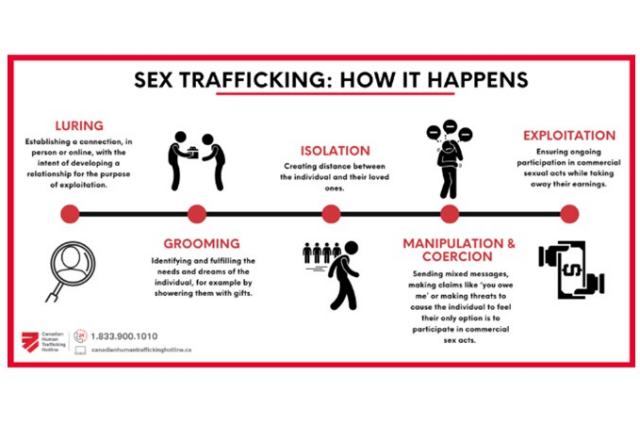
"Human trafficking is the third largest organized crime after drugs and the arms trade across the globe." - Rani Hong, UN Special Advisor for Global Education
Poverty and lack of economic opportunities are significant drivers of human trafficking. Individuals living in poverty often lack access to education, healthcare, and other basic needs, making them vulnerable to trafficking. Traffickers prey on these vulnerable individuals, offering them false promises of a better life and luring them into situations of forced labor or sexual exploitation. Without access to better economic opportunities, victims may feel they have no other choice but to accept these offers.
Political instability and conflict are also significant factors contributing to human trafficking. Displacement caused by war and conflict can lead to the breakdown of social structures, leaving individuals vulnerable to exploitation. In such situations, traffickers may pose as aid workers or recruiters and exploit the desperation of those affected by the conflict.
Cultural factors also play a crucial role in the perpetuation of human trafficking. Gender inequality and discrimination against women and girls, in particular, can increase the likelihood of trafficking. Women and girls are often targeted for sexual exploitation or domestic servitude due to gender discrimination and societal norms that perpetuate their subjugation.
Finally, the demand for cheap labor and sex work fuels the trafficking industry. Businesses seeking to maximize their profits may turn to traffickers to provide them with cheap labor. Similarly, the demand for sex work can lead to the exploitation of vulnerable individuals who are coerced or forced into the industry.
In conclusion, human trafficking is a complex issue with multiple underlying causes, including poverty, political instability, cultural factors, and the demand for cheap labor and sex work. Addressing these root causes requires a comprehensive approach that involves strengthening economic opportunities, addressing political instability and conflict, promoting gender equality, and addressing the demand for cheap labor and sex work. By taking such steps, we can work to prevent and combat human trafficking and protect the human rights and dignity of all people.
TYPES:
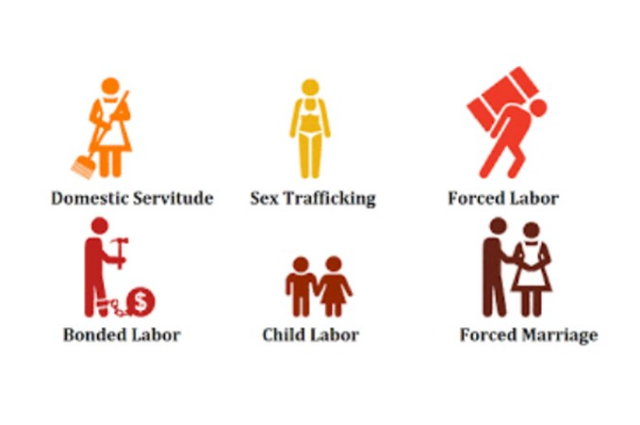
"Human trafficking is a modern form of slavery, and it is happening in every corner of the world." - Hillary Clinton, former United States Secretary of State
Forced labor is one of the most common forms of human trafficking. This type of trafficking involves the use of coercion, deception, or physical force to compel individuals to work against their will. Victims of forced labor may work in a variety of industries, including agriculture, mining, construction, or domestic service. They may be subject to abusive working conditions, have their wages withheld, or suffer physical or psychological harm.
Sex trafficking is another common form of human trafficking. This type of trafficking involves the exploitation of individuals for sexual purposes, including prostitution, pornography, or other forms of sexual exploitation. Victims of sex trafficking may be forced or coerced into the trade, or they may be deceived with false promises of work or education.
Forced marriage is a particularly egregious form of human trafficking that affects millions of women and girls around the world. This type of trafficking involves the use of coercion or deception to force individuals into marriage against their will. Victims of forced marriage may be subjected to sexual and domestic violence, forced labor, and other forms of exploitation.
Child trafficking is perhaps the most disturbing form of human trafficking, as it involves the exploitation of vulnerable children for labor or sexual purposes. Children are often sold into domestic servitude, forced labor in agriculture or factories, or sexual exploitation. Child trafficking is particularly insidious, as children are often too young and powerless to resist their traffickers.
In conclusion, human trafficking is a serious crime that takes many different forms. Each type of trafficking involves the exploitation of vulnerable individuals who are often powerless to resist their traffickers. It is critical that we work to prevent human trafficking, protect victims, and bring traffickers to justice. Only through a coordinated and sustained effort can we hope to end this scourge and protect the human rights and dignity of all people.
IMPACT:
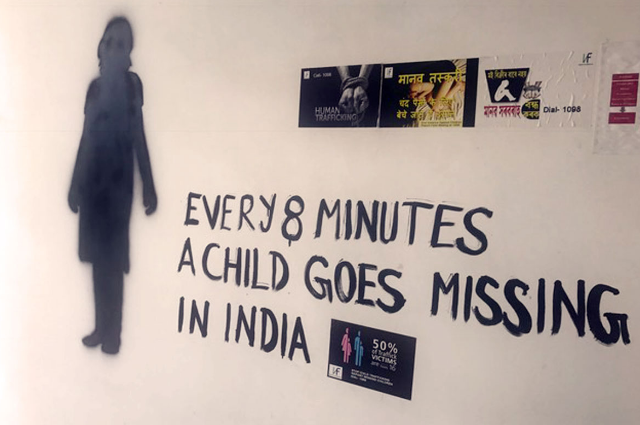
"Human trafficking is a heinous crime that shatters lives, families and communities. It is a grave violation of human rights that affects millions of people around the world, including the most vulnerable and marginalized." - António Guterres, Secretary-General of the United Nations
Victims of human trafficking often suffer physical and psychological harm. They may be subjected to violence, abuse, and exploitation, leading to physical injuries, chronic pain, and long-term health problems. Victims may also suffer from depression, anxiety, post-traumatic stress disorder (PTSD), and other mental health issues as a result of their experiences.
Human trafficking also has an impact on families and communities. When individuals are trafficked, their families are often left behind, uncertain of their loved one's fate and struggling to cope with the emotional and financial consequences of their loss. Communities may also suffer from the loss of human potential and productivity, as well as the erosion of social cohesion and trust.
The economic impact of human trafficking is also significant. Trafficking often involves the exploitation of vulnerable individuals for cheap or unpaid labor, undermining fair labor practices and eroding labor standards. This can result in a loss of productivity and competitiveness in affected industries, as well as damage to local and national economies.
Perhaps most importantly, human trafficking is a grave violation of human rights. It undermines the dignity and autonomy of individuals, depriving them of their freedom and subjecting them to violence, exploitation, and abuse. Trafficking also perpetuates gender inequality and reinforces discrimination against marginalized groups, including women, children, and migrants.
In conclusion, human trafficking has a far-reaching impact on individuals, families, communities, and society as a whole. It is critical that we recognize the profound harm caused by this crime and take action to prevent it, protect victims, and bring traffickers to justice. Only by working together can we hope to end human trafficking and promote respect for human rights and dignity.
EFFORTS TO COMBAT HUMAN TRAFFICKING:
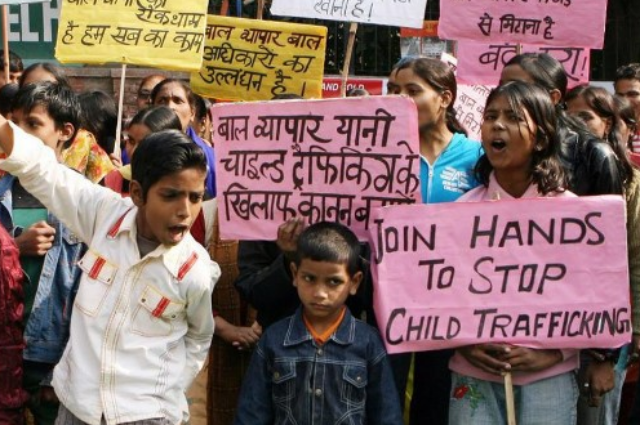
"Human trafficking is a crime that transcends borders and requires a global response. We must work together to dismantle the criminal networks that exploit vulnerable people for profit." - Julia Ormond, actress and UNODC Goodwill Ambassador
Human trafficking is a global issue that requires concerted efforts from governments, civil society, and individuals to combat. There are several key strategies and efforts that can be employed to prevent human trafficking and protect its victims.
International and national laws and policies play a crucial role in combating human trafficking. These laws and policies provide a legal framework for identifying and prosecuting traffickers, as well as protecting victims and promoting their rights. They also establish guidelines and standards for the prevention of trafficking, including measures to address root causes such as poverty and inequality.
Law enforcement and prosecution of traffickers is another important effort to combat human trafficking. This involves investigating and bringing to justice those who engage in trafficking, as well as dismantling trafficking networks and disrupting the flow of illicit profits. Strong law enforcement and prosecution efforts can act as a deterrent to would-be traffickers and help to prevent trafficking in the first place.
Prevention and protection measures for victims are also critical in combatting human trafficking. These measures include providing support and services to victims, such as shelter, medical care, and legal assistance, as well as education and job training programs to help them reintegrate into society. Prevention efforts also include measures to address the root causes of trafficking, such as poverty, discrimination, and lack of access to education and healthcare.
Public awareness campaigns and advocacy are also important in combating human trafficking. These efforts can help to raise awareness about the issue, educate individuals about the signs of trafficking, and encourage action to prevent trafficking and support its victims. Advocacy efforts can also help to promote policy and legislative changes to address trafficking and its underlying causes.
In conclusion, combating human trafficking requires a comprehensive and coordinated approach, involving efforts to prevent trafficking, protect its victims, and prosecute traffickers. Strong international and national laws and policies, law enforcement and prosecution efforts, prevention and protection measures, and public awareness campaigns and advocacy are all critical components of this approach. By working together, we can take meaningful action to combat human trafficking and promote human rights and dignity for all.
CONCLUSION:
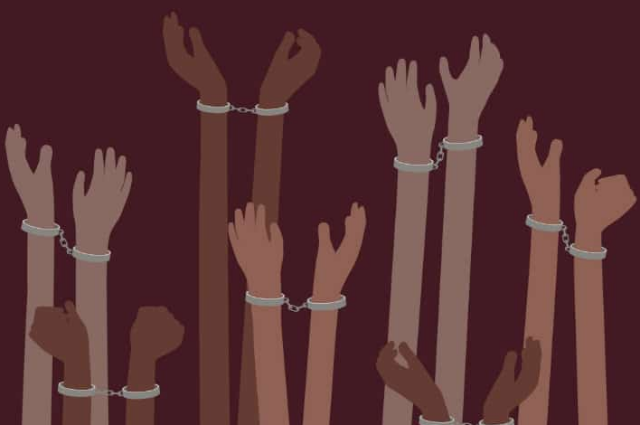
"Human trafficking is not an inevitable part of the human condition. It is a crime that can and must be stopped." - Barack Obama, former President of the United States
In conclusion, human trafficking is a complex and devastating issue that affects millions of people around the world. In this article, we have discussed the types of human trafficking, the impact it has on victims, families, and communities, as well as the efforts being made to combat this global problem.
The types of human trafficking include forced labor, sex trafficking, forced marriage, and child trafficking. These practices lead to physical and psychological harm to victims, impact families and communities, have economic consequences, and violate human rights.
Efforts to combat human trafficking involve international and national laws and policies, law enforcement and prosecution of traffickers, prevention and protection measures for victims, and public awareness campaigns and advocacy. These efforts play a crucial role in preventing trafficking, protecting its victims, and prosecuting those who engage in trafficking.
It is important to continue these efforts to combat human trafficking and promote human rights for all. We must remain vigilant in identifying and responding to trafficking, addressing its root causes, and protecting the most vulnerable members of our society. By working together, we can make progress towards a world free from human trafficking and exploitation.
